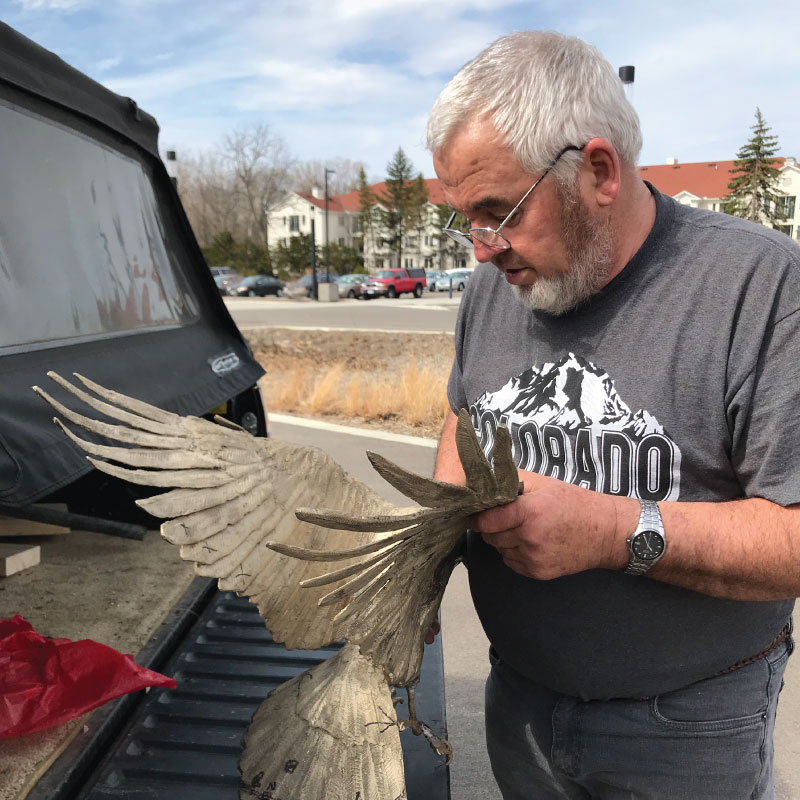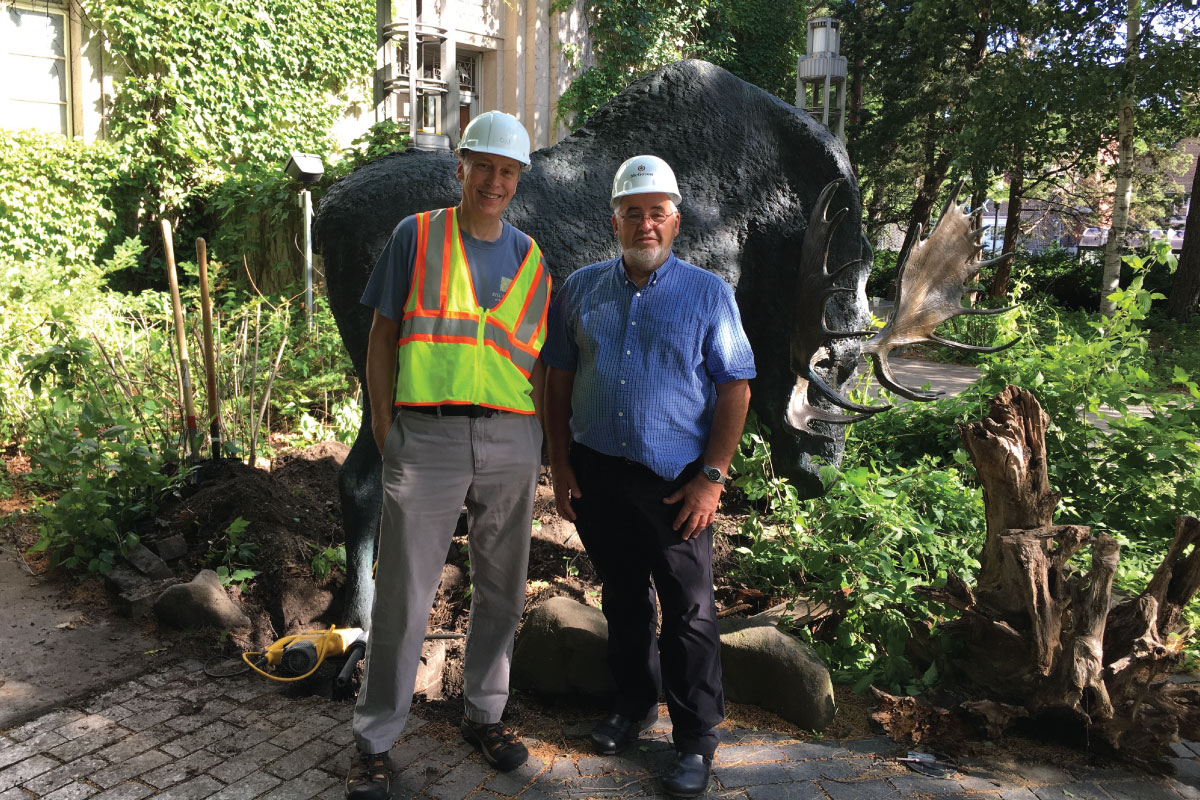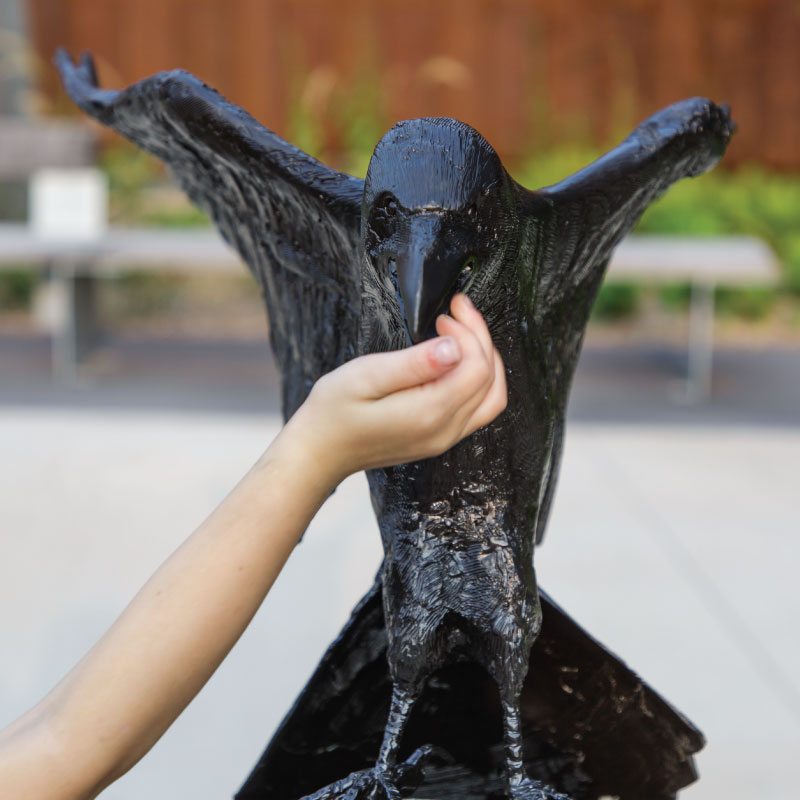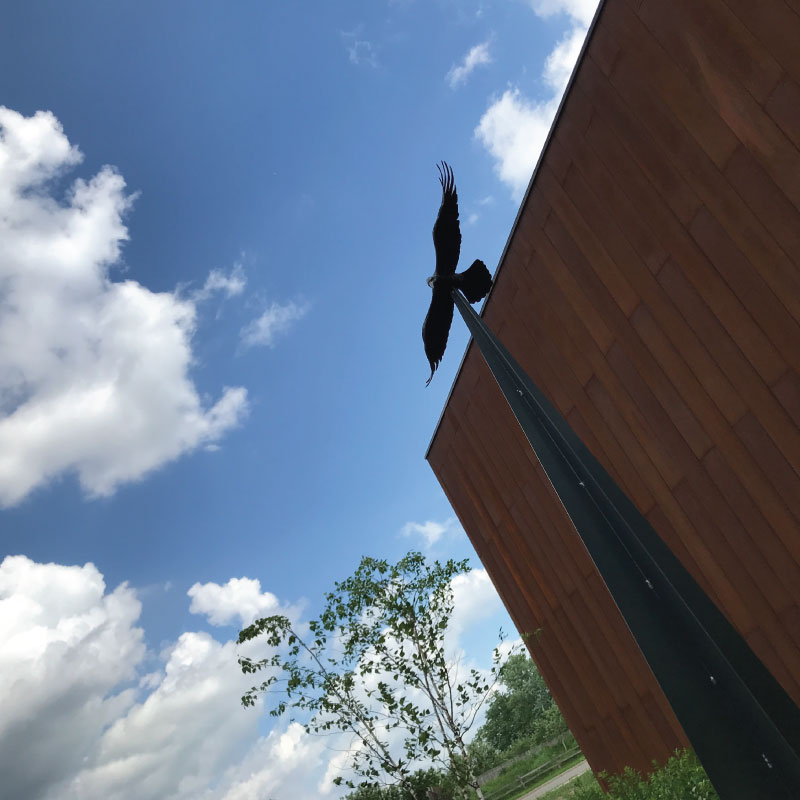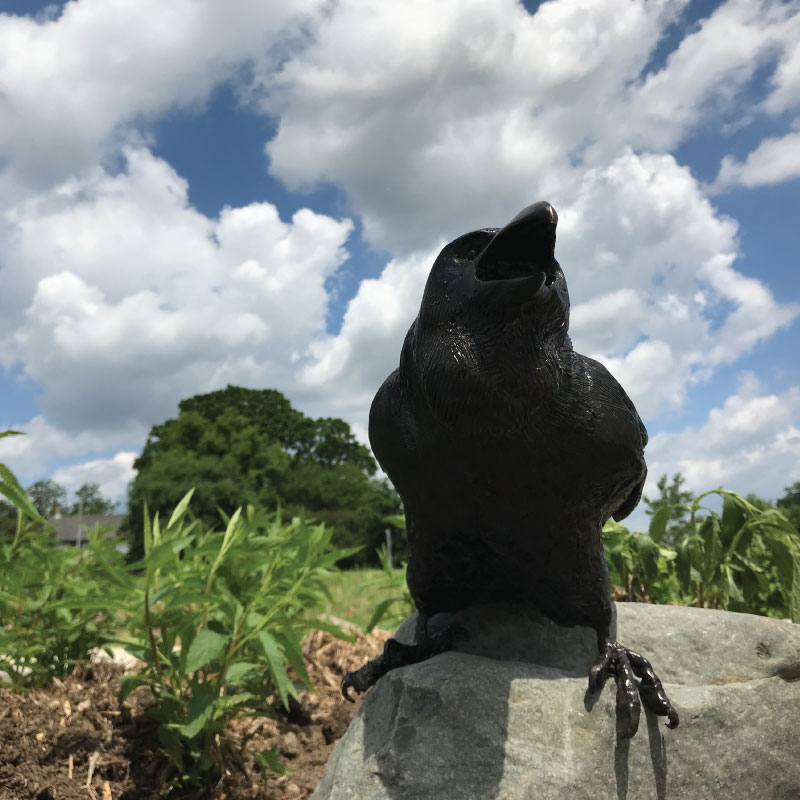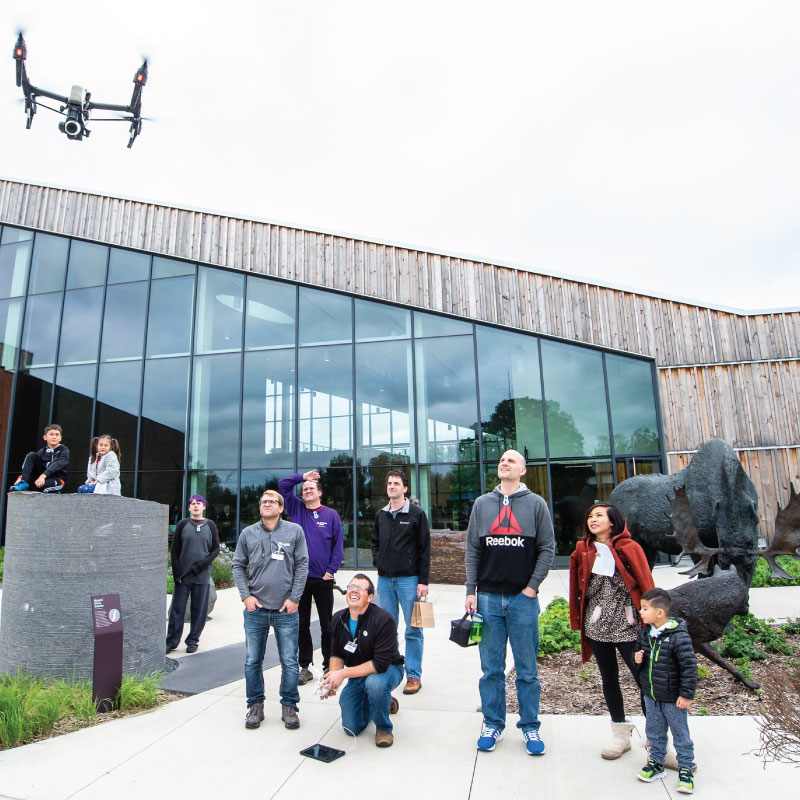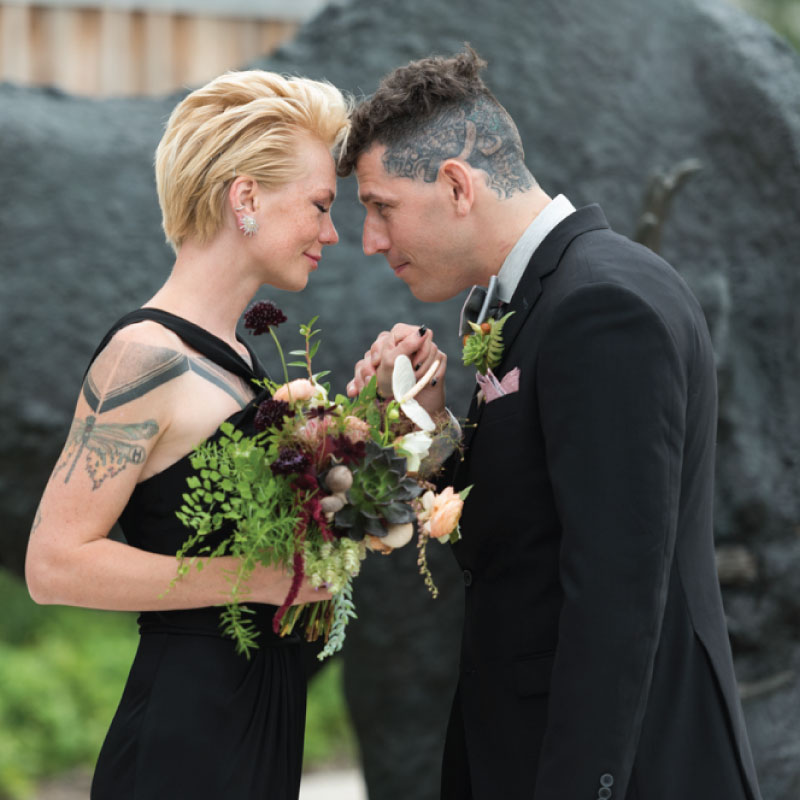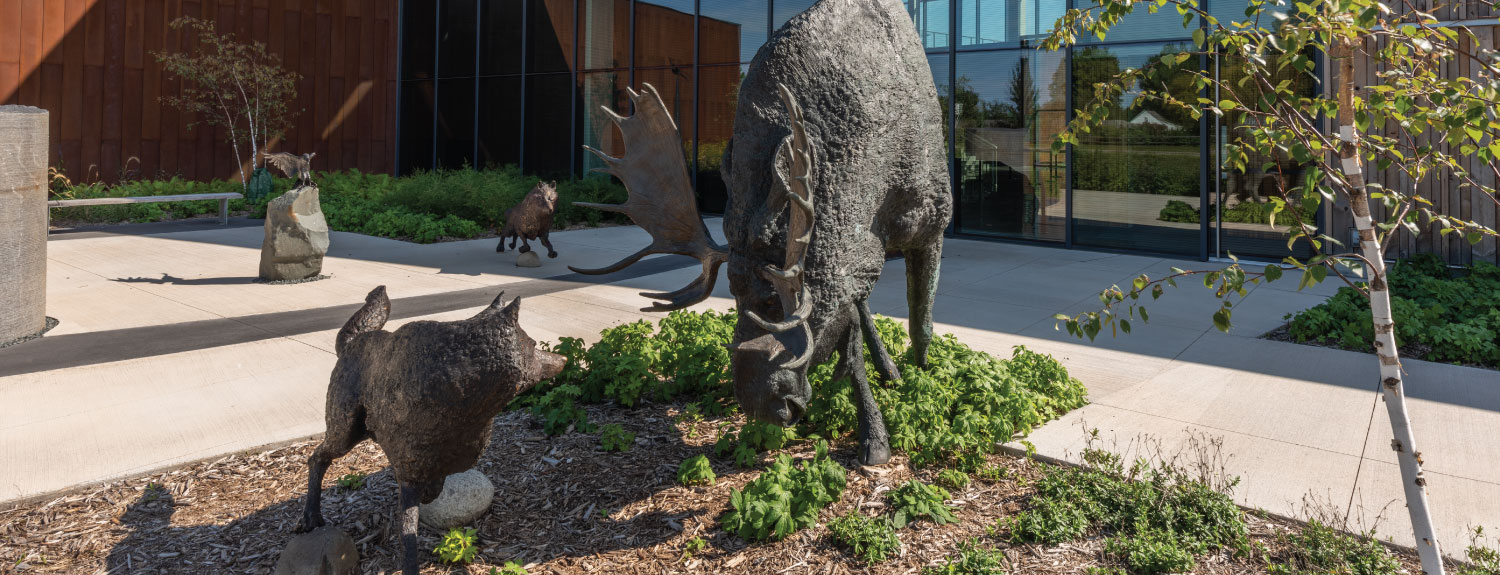
The Encounter
With the addition of ravens, the moose and wolves sculpture is complete.
Published06/14/2019 , by Meleah Maynard
It’s been 20 years since Ian Dudley’s bronze sculpture of a moose and three wolves, The Encounter, was installed in front of the University of Minnesota’s Bell Museum at 10 Church Street. But only recently did the Lindstrom, Minnesota-based sculptor feel the piece was finally complete.
Two years ago today, the moose and wolves were the first pieces to make the move to the Bell’s new home in Saint Paul. Last summer, Dudley added three ravens to the dramatic predator and prey scene, which is now prominently featured outside the museum’s new location.
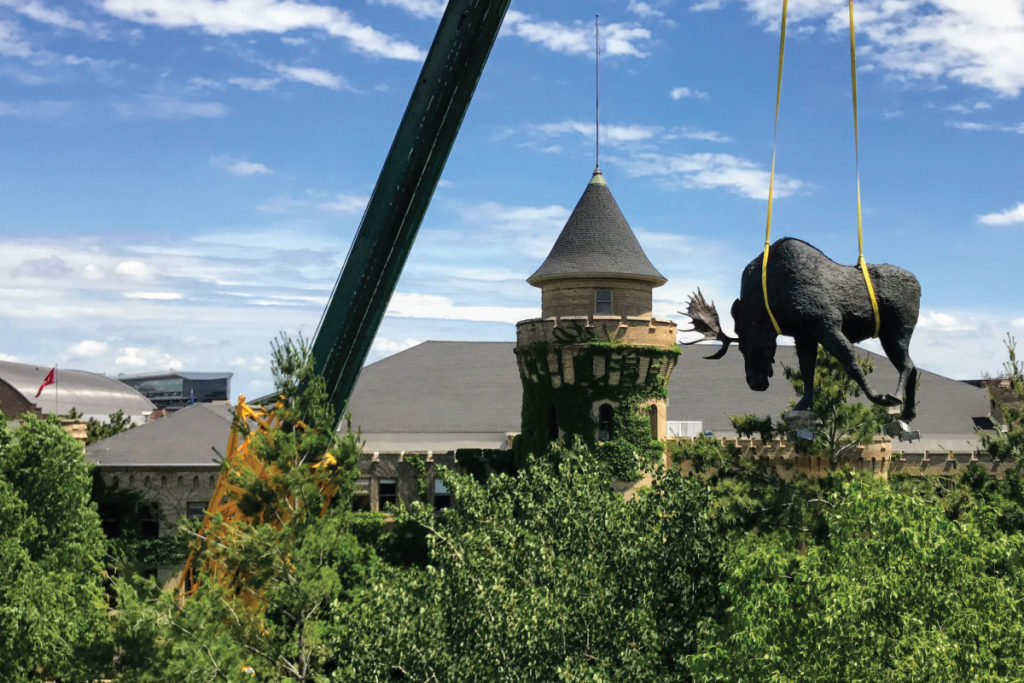
The 2600 pound bronze moose was hoisted 100 feet in the air before being trucked to the new museum on June 14, 2017.
Let’s go back to the beginning
Dudley, who has always been a sculptor, was the Bell Museum’s exhibits designer and coordinator (from 1988–2005) when he and then director, Scott Lanyon, began discussing ideas for a moose and wolves-themed installation in the mid-1990s. Funding was an issue, so Dudley started by creating a small model of what the sculpture would look like. The moment longtime donors Cherie and Jerry Holm saw it, they offered to pay to cast the full-size sculpture. “We love the Bell and thought that model was so interesting, we just said, ‘Let’s do it,’ Cherie says.
Talk of the ravens came up after the moose and wolves had already been cast. Gordon Andersson, who earned his master’s degree in ecology from the U, suggested the idea, explaining that the scene ought to include ravens because they would have been attracted to a kill. Dudley, who had consulted with wolf researchers to ensure that he got the animals’ interaction right from the start, liked the idea of adding ravens. But for various reasons, that part of the project was put on hold. The completed moose and wolves were installed in 1999.
Years passed, and Andersson contacted the museum again, asking whether the moose and wolves would be moving to the new location. When he found out they were, he offered to fund the long-awaited ravens: “I’ve always wanted to include ravens because I think they add to the environmental and conservation message,” he says. “In this case, the ravens are anticipating a kill so they are watching what’s going on. When you read about how wolves and ravens interact, you can see how they have a mutually beneficial relationship. It makes sense for a natural history museum to depict that, and to also focus on the role of birds in nature.”
Birding in bronze
This was Dudley’s first time sculpting birds. So he devoted many hours to studying photos and observing ravens on the Gunflint Trail and Colorado’s Great Sand Dunes National Park and Preserve. In addition to focusing on their movements, he honed in on details, like their feet, beaks and wings. As he added the three birds to the sculpture, he was pleased with what he saw. “It didn’t feel whole to me before, and it’s such a relief to see it all complete now,” he says. “This has been a fabulous project to work on. I’m so glad the moose and wolves are a part of the new building.”
Now at home in the North Woods Garden along with large geology samples and native plantings, The Encounter is once again a favorite stop for museum-goers and passersby alike.


